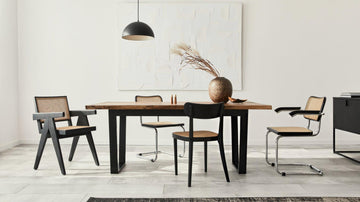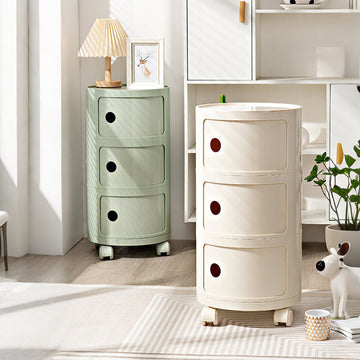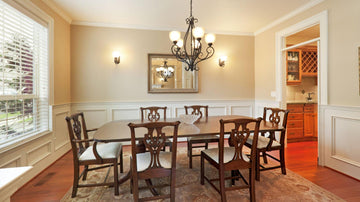Table of Contents
- Introduction
- Why I Fell in Love with Mixed Dining Chairs
- How to Mix Without Making a Mess
- Mixing Styles—What Actually Works
- Playing with Color (Without Going Overboard)
- Playing with Materials (Texture = Warmth)
- Real-Life Setups That Work
- Mistakes I’ve Made (So You Don’t Have To)
- Buying Tips (Especially If You’re on a Budget)
- Final Thoughts
When I moved into my first apartment, I bought a dining set just because it was “complete.” Four matching chairs, one table, and no personality. It looked fine—but it didn’t feel like me.
A few years (and a couple of moves) later, I’ve learned that the best dining spaces aren’t the ones that look like they came straight out of a catalog. They’re the ones that tell a story. And sometimes, that story is told through chairs that don’t match.
Mixing dining chairs isn’t about being random—it’s about being real. It’s about combining comfort, creativity, and a bit of courage to create a space that reflects who you are.
If you’re curious about how to do it without making your dining area look like a thrift store explosion, I’ve got you. Here’s what I’ve learned—some lessons from design, some from trial and error.

Why I Fell in Love with Mixed Dining Chairs
Breaking Free from the “Set” Mentality
There’s something oddly satisfying about a matching set. It’s tidy, it’s easy, and it feels like the “safe” choice. But “safe” can also mean… boring.
The first time I bought a mismatched chair for my dining table, it felt like I was breaking a rule. Turns out, it was the best decision I made for my space. One new chair, and suddenly the room looked more playful, less staged. It felt lived-in—in a good way.
A Small Change That Makes a Big Impact
You might not think chairs matter much, but they set the tone for how a space feels. A single bold chair can add energy. A mix of textures can make the room feel layered.
I’ve found that guests always notice the dining chairs. They ask where I got them. They pick favorites. Sometimes they even swap seats mid-meal. It becomes part of the experience.
How to Mix Without Making a Mess
Let’s be honest—when done poorly, mixing chairs can look chaotic. But when done with a bit of thought, it feels intentional, even artistic. Here are the things I always consider before adding a new chair to the mix.
Pick One Thing to Keep Consistent
I like to think of this as the “glue” that holds everything together. It could be:
-
Similar wood tones
-
Matching seat heights
-
Chairs from the same decade
-
Shared shapes or curves
For example, I once collected five different chairs from flea markets—all completely different styles—but painted them in various shades of navy. Suddenly, they looked like they belonged.
If you’re not into DIY, look for product lines that offer variations with a shared base. The SSL Mary Chair, for instance, comes in multiple colors but has the same silhouette—perfect for this kind of mix-and-match approach.
Balance the Visual Weight
A heavy, upholstered armchair next to a dainty café chair? That can work—but only if it’s balanced. If one side of the table feels too “loud,” the whole setup looks lopsided.
I usually stand back and look at the chairs as shapes, not just styles. Are they visually balanced side to side? Does one chair stick out like a sore thumb? If something feels off, it probably is.
Comfort Comes First
No matter how cool a chair looks, if it’s uncomfortable, it’s not worth it. Especially at the dining table—where people actually sit for more than five minutes.
Make sure the seat height is within an inch or so across all your chairs. Anything more, and people will feel it. And if you’re buying secondhand? Sit in it first. Wobbly legs and weird angles aren’t charming once dinner starts.

Mixing Styles—What Actually Works
Modern + Vintage
There’s something about mixing clean lines with a bit of history that just feels right. I once paired a set of sleek, black plastic chairs with two old wooden spindle-back chairs at the ends. It added warmth and character without looking dated.
Scandinavian + Industrial
This is a favorite for open-plan spaces. Light woods and soft curves meet metal frames and raw finishes. Try pairing a pale oak chair with iron legs next to a steel-framed stool. The contrast is strong, but it works.
The SSL Colorful Stool line actually blends these two worlds nicely—Nordic simplicity with a hint of edge.
Traditional + Contemporary
Mixing old-world charm with modern shapes keeps things interesting. A Louis-style chair next to a molded Eames-style seat? It shouldn't work, but it does—as long as the colors or materials tie them together.
East + West
This one’s trickier, but so worth it. I’ve seen rattan Chinese-style chairs mixed with Danish minimalist ones, and the result was stunning. The key is to keep the palette soft and let the shapes speak.

Playing with Color (Without Going Overboard)
Gradient Shades
Start with one color and explore its different tones. For example, four chairs in varying shades of green—from sage to forest—can look cohesive but still dynamic.
One Bold, the Rest Calm
If you fall in love with a bright yellow chair, go for it. Just balance it with more neutral companions—white, wood, grey, or black.
Neutrals as Anchors
I keep a couple of white or light wood chairs around because they go with everything. If you’re mixing bold shapes or textures, neutrals help keep the room from feeling too busy.
A Dash of Metallic
One chair with gold or chrome legs can elevate the whole setup. Just use it sparingly. A little shine goes a long way.
Playing with Materials (Texture = Warmth)
Sometimes it’s not the color or shape that makes a difference—it’s the material.
Wood + Metal
Classic combo. I like pairing a walnut wood chair with a matte black steel stool. Warm + cool. Soft + hard. It just works.
Upholstery + Hard Shell
A padded, fabric-covered chair next to a molded plastic one gives you a nice contrast. It also gives your guests options—some prefer the cushy seat, others like the firm support.
Clear Materials
Transparent chairs (like acrylic or polycarbonate) are great for small spaces. They don’t crowd the room visually, and they mix well with almost anything.
Natural + Synthetic
Think rattan with powder-coated metal. Or a bamboo-framed chair next to a modern polypropylene seat. The contrast is subtle, but it adds depth.
Real-Life Setups That Work
For a 4-Seater Table
-
Two matching chairs on each side, plus one bold chair at the end
-
Four different chairs, all in the same wood tone
-
Three neutrals + one colorful “hero” chair
For a 6-Seater Table
-
“4+2” model: four matching side chairs with two armchairs at the ends
-
“3+3” model: alternate every other chair (A-B-A / B-A-B)
-
Mix materials but keep shapes similar
For an Open Dining Area
When your dining space flows into the living room, it helps to echo themes. A leather dining chair that reflects the couch, or black metal legs that match the coffee table, can tie it all together.
For Tiny Spaces
In small apartments, every chair has to work hard. I like using slim, stackable chairs mixed with one statement piece. If space is tight, go for chairs with open backs—they feel lighter.

Mistakes I’ve Made (So You Don’t Have To)
Yes, I’ve messed this up before. Here’s what I’ve learned.
Too Random = Too Much
If every chair is a different color, shape, and height, it’s going to feel messy. Find one thread—anything—that connects them.
Ignoring Comfort
I once bought a gorgeous vintage chair that looked amazing… and made my back hurt. Pretty doesn’t always mean practical.
Style Clashes
Some mixes just don’t blend. If your chairs feel like they belong in different houses, they probably do. Try adding a neutral rug or soft lighting to help bridge the gap.
Scale Problems
Watch out for oversized chairs at small tables. Or tiny chairs at a big one. Proportion is everything—especially when you’re mixing.
Buying Tips (Especially If You’re on a Budget)
Start Small
Don’t feel like you have to buy six different chairs today. Start with a few basics, and build your mix over time. The fun is in the hunt.
Invest in the Anchors
If you’re going to splurge, do it on the chairs at the head of the table or the one you use most. Let simpler (but still solid) chairs fill in the rest.
Stick to Similar Quality
Even if your chairs don’t match in style, they should feel like they belong in the same room. Don’t mix a $400 designer chair with a $20 folding chair—unless you’re doing it ironically (and even then, be careful).
Mix New and Old
Some of my favorite combinations involve a vintage thrift-store find and a crisp, modern chair from a design store. Just make sure the old one’s sturdy—and doesn’t smell weird.
Final Thoughts
Design rules are helpful—but they’re not sacred. If you like the way it looks and it works for your life, that’s what matters.
Mixing dining chairs is one of those small design choices that can completely change the feel of a room. It’s affordable, flexible, and personal. And once you start, you’ll never look at a “matching set” the same way again.








